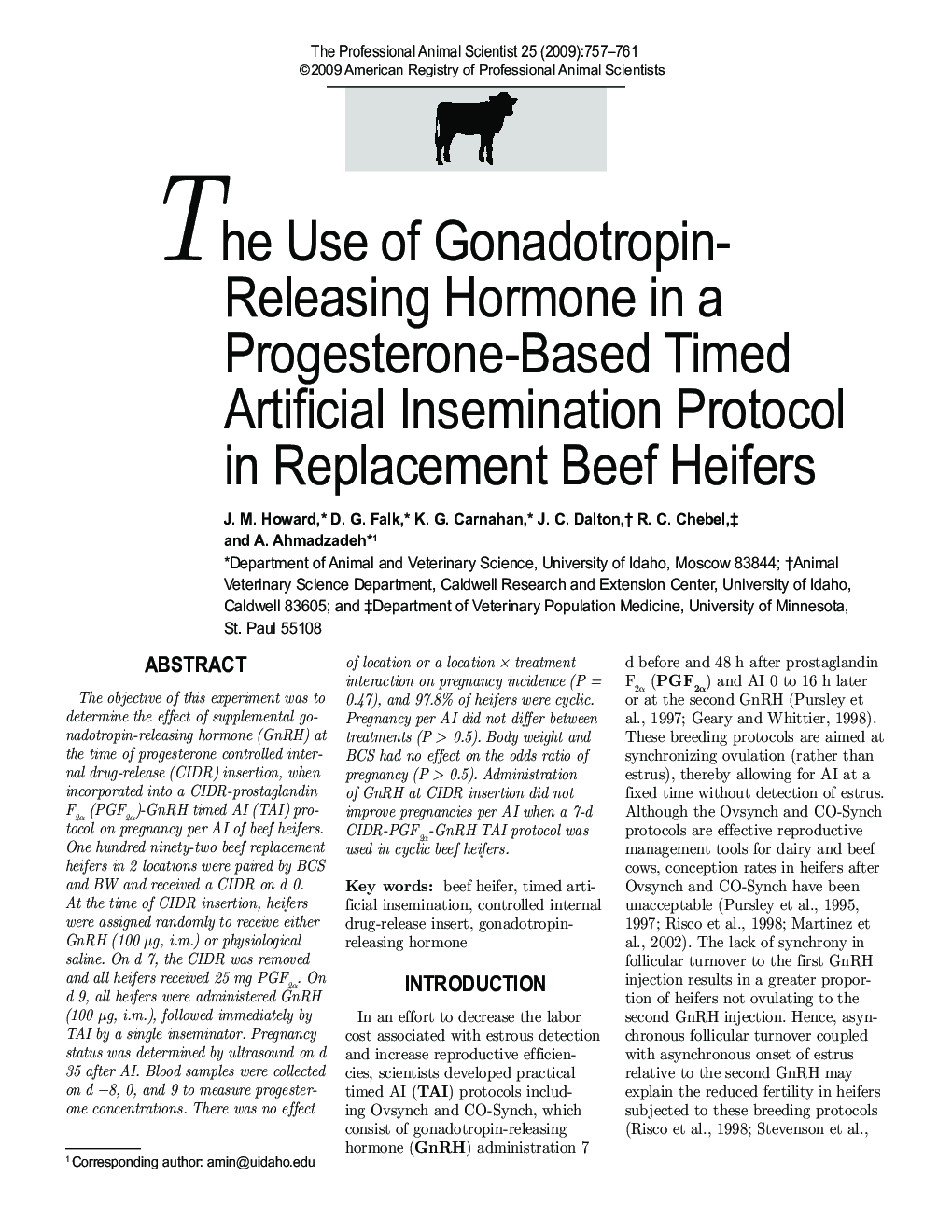| Article ID | Journal | Published Year | Pages | File Type |
|---|---|---|---|---|
| 2454444 | The Professional Animal Scientist | 2009 | 5 Pages |
Abstract
The objective of this experiment was to determine the effect of supplemental gonadotropin-releasing hormone (GnRH) at the time of progesterone controlled internal drug-release (CIDR) insertion, when incorporated into a CIDR-prostaglandin F2α (PGF2α)-GnRH timed AI (TAI) protocol on pregnancy per AI of beef heifers. One hundred ninety-two beef replacement heifers in 2 locations were paired by BCS and BW and received a CIDR on d 0. At the time of CIDR insertion, heifers were assigned randomly to receive either GnRH (100 μg, i.m.) or physiological saline. On d 7, the CIDR was removed and all heifers received 25 mg PGF2α On d 9, all heifers were administered GnRH (100 μg, i.m.), followed immediately by TAI by a single inseminator. Pregnancy status was determined by ultrasound on d 35 after AI. Blood samples were collected on d â8, 0, and 9 to measure progesterone concentrations. There was no effect of location or a location à treatment interaction on pregnancy incidence (P = 0.47), and 97.8% of heifers were cyclic. Pregnancy per AI did not differ between treatments (P > 0.5). Body weight and BCS had no effect on the odds ratio of pregnancy (P > 0.5). Administration of GnRH at CIDR insertion did not improve pregnancies per AI when a 7-d CIDR-PGF2α-GnRH TAI protocol was used in cyclic beef heifers.
Keywords
Related Topics
Life Sciences
Agricultural and Biological Sciences
Animal Science and Zoology
Authors
J.M. Howard, D.G. Falk, K.G. Carnahan, J.C. Dalton, R.C. Chebel, A. Ahmadzadeh,
